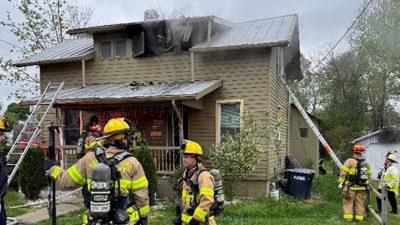By Ross Amin
President, Organization of Iranian American Commnunities

This disturbing scene went on for months until no less than 30,000 Iranian political prisoners were executed and buried in unmarked mass graves, often unbeknownst to their families.
The mastermind behind this disturbing massacre was the regime’s former supreme leader Khomeini. During this time, Iran had already been weakened by the eight-year war with Iraq and was dealing with a progressive movement from the main Iranian opposition organization, the Mujahedin-e-Khalq (MEK), which then-regime’s Supreme Leader Khomeini viewed as an existential threat.
The executions were used as a way of cleansing the country of an entire ideology dedicated to democracy, to intimidate the people of Iran against joining the MEK and other opposition groups, and to solidify the power of the regime.
Official details of the massacre have remained shrouded in mystery until recently, when an audio file surfaced online of a conversation between Ayatollah Hossein Ali Montazeri, the heir apparent for Khomeini at the time, and other senior judicial figures such as Mostafa Pourmohammadi, a member of the death committee. In this audio, we hear irrefutable proof that not only did these executions occur, but that they were premeditate and approved by Khomeini and his appointed “death committees” consisting of “three-member panels of a Sharia judge, a representative of the Ministry of Intelligence, and a state prosecutor.”
The audio also reveals that Montazeri openly condemned the massacre, calling it “the biggest crime committed by the Islamic Republic.” Despite his opposition to the MEK, Montazeri recognized that the executions were unjust, and he expressed his crisis of conscience regarding the massacre, attesting that he was “not able to sleep” because of it. The audiotapes also revealed that the senior officials were accomplices in the planning and implementation of the massacre and that it was an organized and intentional act of mass murder by the state.
Ayatollah Montazeri was later placed under house arrest until his death in December 2009. The revealed audio file supports the theory that he was removed from power and mitigated to the status of prisoner because of his open condemnation of the massacre.
This audio file is as relevant now as it was in 1988. Those who committed the massacre are still in power. An example is Mostafa Pourmohammadi, who is now the Minister of the Interior under Hassan Rouhani, the supposedly moderate current Iranian president. With people such as Pourmohammadi directly involved in the present Iranian regime, many critics claim that the link from today’s regime to the regime of 1988 explains how executions in Iran have increased as of late, and the regime remains strict despite its perceived “moderate” image in the West.
According to news sources, executions in Iran “have increased in each of the first three years of Rouhani’s tenure, reaching a total of 966 last year, the highest total in a decade.” By some accounts, Tehran has executed over 2,700 people under Rouhani.
Fear of another, similar massacre also hangs over the heads of Iranian prisoners. A Parliament deputy said earlier this month that 4,500 inmates were on death row. According to the information received by the Iranian opposition, prison authorities have adopted new repressive measures in recent days in Gohardasht Prison. In addition to an unprecedented increase in the number of sentry guards, groups of Islamic Revolutionary Guard Corps (IRGC) have been stationed in various parts of the prison and even on the rooftops. Doors of all wards are closed throughout the day and all the windows and openings in the ward have been covered by steel plates from both sides. Prisoners are prevented from taking fresh-air breaks.
In the course of the 1988 massacre, a large number of prisoners were hanged in Gohardasht Prison where similar repressive measures were adopted at the time.
If Rouhani is as moderate as he claims, it is difficult to understand why the regime’s approach to political prisoners so closely resembles the oppressive approach of the late 1980’s. Critics of Rouhani suggest that despite his image, he has allowed for an increase in executions while appointing officials such as Pourmohammadi, who have yet to be held accountable for involvement in the executions of 1988.










